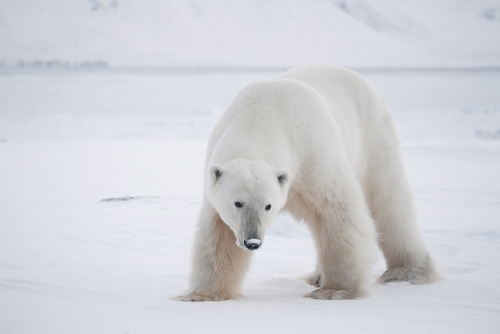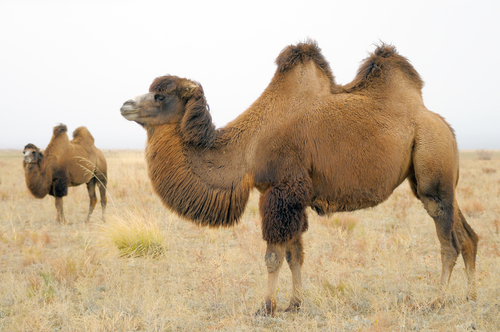All organisms are adapted to their environment, i.e. their surroundings. That means their characteristics are varied to ensure survival in their habitat, the place they live in. There are many types of adaptations: for hunting, the weather, for camouflage, for protection, for swimming and many more. Below, you will explore the specific adaptations of some organisms.

Read the information and try to identify the visible adaptations of the polar bear in the picture.
It has small ears to stop it losing heat.
It has white fur for camouflage.
Its fur is thick for insulation.
It has a thick layer of blubber (fat) under the skin for insulation.
Its feet are large to spread the weight so the polar bear does not sink in the snow. They are also good for swimming.
It has fur under its feet to give rough soles for good grip on the ice, and for insulation.
It has sharp claws and teeth for catching and eating prey
Did you manage to find most adaptations? Now, do the same for this camel:

The desert environment is very difficult - it is extremely hard to find water there and temperatures during the day may exceed 40° celsius. However, during the night, temperatures may fall below freezing. This is how the camel adapts to that:
Camels have no fat in their body, apart from the fat in their humps. Fat is an insulator and this would cause the camel to overheat.
The stored fat in the humps is used as an energy store when there is no food available.
A camel's body temperature rises above normal without harming them, they do not need to sweat.
Camels have thick eyelashes and hairy nostrils to stop sand getting in.
Like polar bears, they have large feet to stop them sinking into the sand.
In your exam, you may be asked about adaptations of organisms that you have not even heard of before. This is fine - you just need to read the information about their environment and their characteristics carefully, and use your common sense and imagination to identify how they might be adapted. You will be able to have a go at this in the questions that follow. The general rule is you get more marks if you identify the adaptation and the reason it enables survival.
Are you ready to give it a go?








